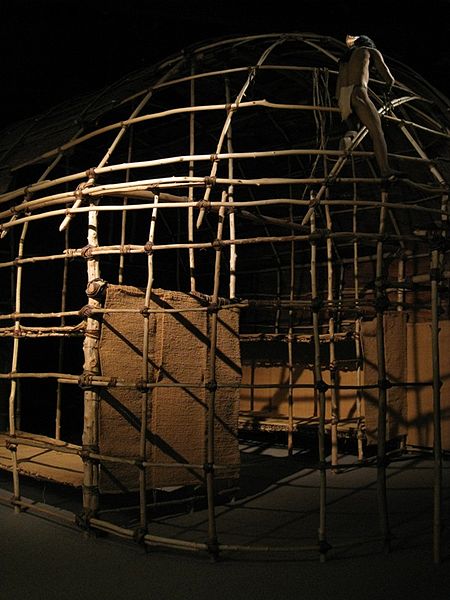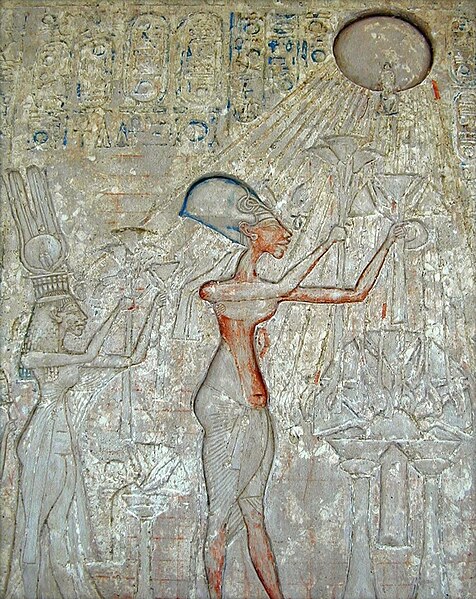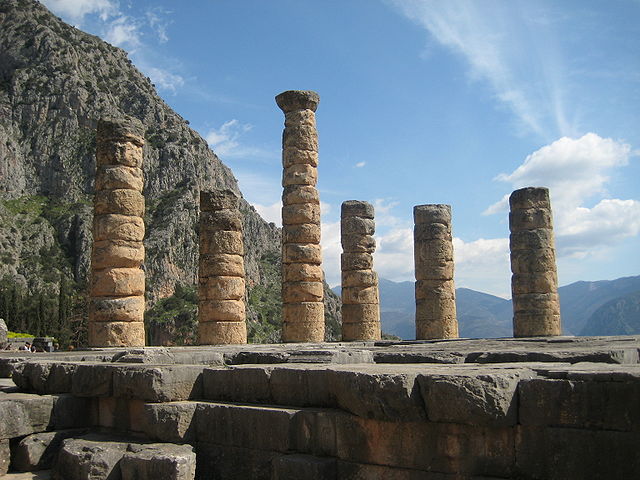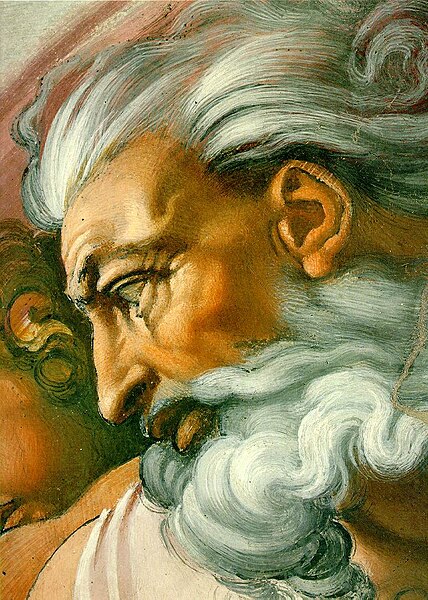Native American religions
Native American religions are the spiritual practices of the Native Americans in the United States. Ceremonial ways can vary widely and are based on the differing histories and beliefs of individual nations, tribes and bands. Early European explorers describe individual Native American tribes and even small bands as each having their own religious practices. Theology may be monotheistic, polytheistic, henotheistic, animistic, shamanistic, pantheistic or any combination thereof, among others. Traditional beliefs are usually passed down in the forms of oral histories, stories, allegories, and principles.
Navajo men dressed as Tó Neinilii, Tobadzischini, Nayenezgani (1904)
Doctor's headdress, Pomo
This replica of a Six Nations (Haudenosaunee) longhouse represents where the traditional practices take place.
1891 Sioux Ghost Dance. The Ghost Dance movement influenced many Native American communities.
Monotheism is the belief that one god is the only deity. A distinction may be made between exclusive monotheism, in which the one God is a singular existence, and both inclusive and pluriform monotheism, in which multiple gods or godly forms are recognized, but each are postulated as extensions of the same God.
Pharaoh Akhenaten and his family adoring the Aten
Fictionalized portrait of Xenophanes from a 17th-century engraving
Remains of the Temple of Apollo at Delphi, Greece
God in The Creation of Adam, fresco by Michelangelo (c. 1508–1512)








